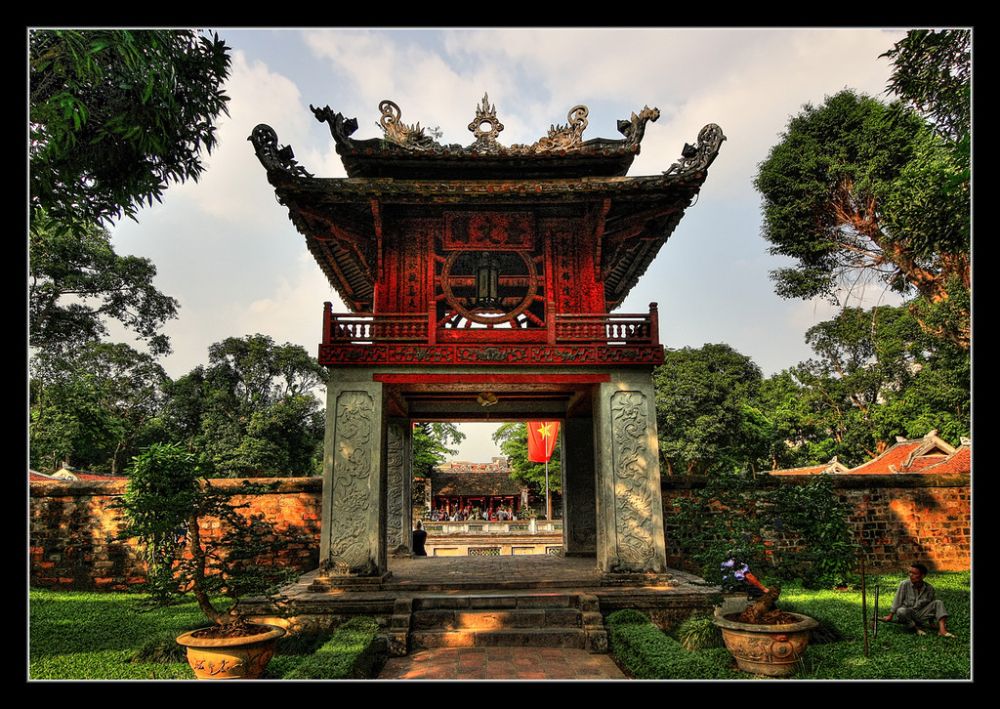

The Temple of Literature, known as Văn Miếu – Quốc Tử Giám in Vietnamese, is one of Hanoi's most picturesque tourist attractions and is a testament to the country's long-standing commitment to education and literature. Founded in 1070 by Emperor Lý Thánh Tông, it is often cited as one of Hanoi's most culturally and historically significant sites.
Built in homage to Confucius, the philosopher and educator, the Temple of Literature was also the site of the first university in Vietnam, Quốc Tử Giám, established afterwards in 1076. For hundreds of years, it served as the place where the nation's scholars were educated in the principles of Confucianism, literature, and poetry.
Throughout its history, the Temple of Literature has seen various periods of significance and neglect, reflecting the changing tides of Vietnam's political and social landscapes. It remained an intellectual center until the late 18th century and was revived during French colonial rule as a symbol of Vietnamese tradition and endurance.
Interest in the Temple of Literature as a tourism destination began during the French colonial period, as Western scholars and tourists took an interest in the antiquities of the region. However, the site gained significant popularity with international tourists in the late 20th century, as Vietnam opened its doors to the world in the post-war period.
The government of Vietnam has since recognized the importance of preserving this historical site, both for its cultural value and its potential to attract tourists. The Temple of After much restoration and preservation work, the site is now a prominent symbol of Hanoi and Vietnamese heritage.
In recent years, tourism at the Temple of Literature has reflected a broader global trend towards cultural and educational travel. Tourists are increasingly seeking out authentic experiences that allow them to connect with the history, culture, and traditions of the places they visit.
Additionally, many visitors to the Temple of Literature are particularly interested in its tranquil gardens, peaceful courtyards, and the rich architectural details that offer a respite from the bustling city outside its walls. The site also offers a venue for traditional Vietnamese music performances and calligraphy, allowing tourists to engage with these ancient arts firsthand.
Today, the Temple of Literature is open to the public, and visitors can walk through its five courtyards, admire the stone steles with the names of past scholars, and view the Well of Heavenly Clarity. The temple also features altars and statuary dedicated to Confucius and his disciples.
Visitors often find themselves captivated by the temple’s role in Vietnamese education, as depicted through various exhibitions and displays throughout the site. This includes a rich collection of historical artifacts, including old university buildings and relics related to the scholarly examinations that took place here.
The Temple of Literature continues to be an essential destination for anyone interested in the culture and history of Vietnam, attracting scholars, tourists, and locals alike.
Whether you're a history buff, passionate about architecture, or just looking to unwind in a serene environment, the Temple of Literature remains a treasure trove of knowledge and beauty, encapsulated within Hanoi's old quarter.
Visiting the Temple of Literature provides an enriching journey into Vietnam’s esteemed past and offers a deep understanding of the country's dedication to scholarship and philosophy, which continues to shape its present and future.